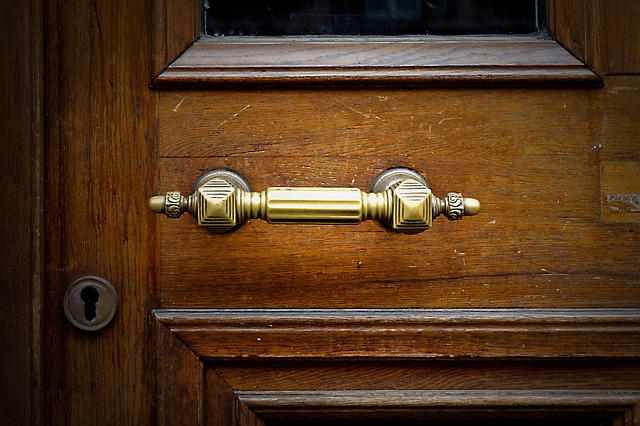Residential access security requires understanding unique property needs, choosing from traditional keypads, biometric systems, or emerging tech like mobile apps and iris scans, balancing complexity and budget, installing components tailored to entry points and foot traffic, conducting regular maintenance, and integrating smart home automation for remote control and monitoring. Aligning these factors ensures optimal, personalized security for your residence.
Choosing the right access control system is paramount for enhancing your home’s security. This comprehensive guide provides expert advice on navigating the complex landscape of residential access security. From understanding your unique needs to exploring diverse system types like keypads and biometrics, we cover essential factors for selection. We also delve into installation, maintenance, and integration with smart home automation, ensuring a secure and efficient setup tailored to your residence.
- Understanding Your Residential Security Needs
- Types of Access Control Systems: Keypad, Biometrics, and More
- Factors to Consider When Selecting an Access Control System
- Installing and Maintaining Your Chosen Access Control System
- Integrating Smart Home Automation with Access Control Systems
Understanding Your Residential Security Needs

Understanding your residential security needs is a crucial first step in choosing an access control system. Different homes have varying requirements based on factors like size, layout, and specific concerns such as intrusion prevention or fire safety. Assessing these needs involves considering the areas that require monitoring, the level of protection needed for valuables, and any special considerations for vulnerable family members.
For instance, a single-family home might prioritize outdoor security with motion sensors and surveillance cameras, while a multi-family dwelling would focus on managing access to common areas and individual units. By aligning your chosen access control system with these needs, you ensure optimal security tailored to your residential environment.
Types of Access Control Systems: Keypad, Biometrics, and More

When considering access control systems for your home or property, understanding the available options is key to enhancing your residential access security. One popular and traditional method is the keypad system, which requires an entry code to gain access. These are commonly used for gates and garage doors, offering a simple yet effective solution for those seeking basic protection.
Biometric systems have also gained popularity in recent years due to their advanced security features. These systems use unique biological traits such as fingerprints or facial recognition to identify individuals, providing an extra layer of safety for your home. Beyond keypads and biometrics, other cutting-edge technologies like card access, mobile apps, and irises scans are transforming residential access security, offering homeowners even more control and peace of mind.
Factors to Consider When Selecting an Access Control System

When selecting an access control system, several key factors must be considered to ensure optimal residential access security. Firstly, evaluate your property’s specific needs and layout. Different systems offer various features such as keypads, biometric scanners, or card readers, each with its own advantages and limitations. For instance, biometric scanners provide high security but may require more initial setup time compared to a simple keypad.
Additionally, think about the level of complexity and budget available for installation and maintenance. Some access control systems are straightforward to install and maintain, while others can be intricate and demand regular professional servicing. Balancing your property’s requirements with these factors will help you choose an access control system that offers both robust security and practical ease of use.
Installing and Maintaining Your Chosen Access Control System

Installing and maintaining your chosen access control system is a critical aspect of ensuring robust residential access security. Begin by assessing your property’s specific needs, including the number of entry points, foot traffic patterns, and required level of security. This evaluation guides your selection of components like readers, controllers, and software that seamlessly integrate to form an effective barrier against unauthorized access.
Regular upkeep is vital to maintain optimal performance. This includes cleaning sensors and readers, testing alarms and notifications, and updating firmware to patch vulnerabilities. Many modern systems offer remote monitoring and notification features, simplifying proactive maintenance. By adhering to these practices, you ensure your residential access security system remains reliable and effective over time.
Integrating Smart Home Automation with Access Control Systems

Integrating smart home automation with access control systems offers a seamless and enhanced security experience for homeowners. By combining these technologies, residents can achieve residential access security that goes beyond traditional locking mechanisms. Smart home automation allows for remote monitoring and control of access points, such as doors and gates, via mobile devices or voice assistants. This means homeowners can grant or revoke access to authorized individuals from anywhere, at any time.
Moreover, integrated systems can automate entry procedures based on predefined rules and schedules. For instance, a homeowner could program the system to automatically unlock the front door when a recognized family member approaches, using biometric data or security tokens. This not only improves convenience but also strengthens residential access security by minimizing human error and ensuring that only authorized individuals gain entry.
When choosing an access control system, understanding your residential security needs is paramount. By evaluating factors like convenience, security strength, and integration capabilities, you can select a system that suits your home’s requirements. Keypad, biometric, and hybrid solutions offer diverse options to enhance your dwelling’s safety. Proper installation and maintenance ensure optimal performance, while integrating smart home automation further boosts both security and lifestyle. Prioritizing residential access security through these steps fosters a secure and modern living environment.
